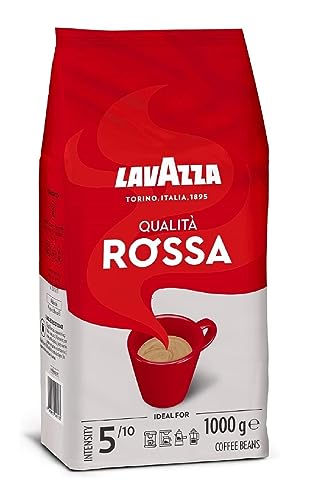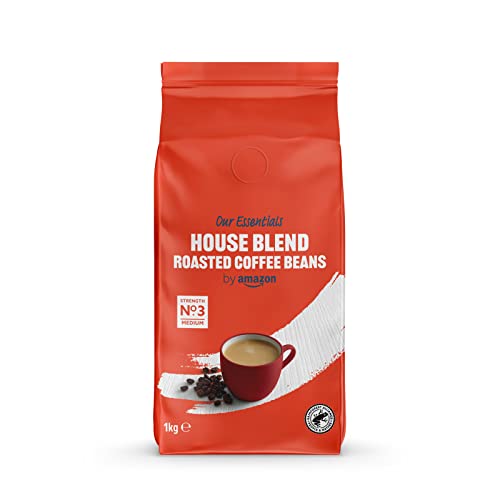
About Me
Arabica Coffee Beans 1kg
 The arabica bean is one of the most sought-after varieties of coffee. It thrives at high altitudes near the equator and requires specific climate conditions to thrive.
The arabica bean is one of the most sought-after varieties of coffee. It thrives at high altitudes near the equator and requires specific climate conditions to thrive.
Research into the bean has led to new cultivars that are more resistant to disease and climate change. These new varieties have unique flavor profiles that differentiate them from other types of coffee.
Origin
Arabica coffee beans are the preferred beans for the majority of Western coffee blends and make up about 60% of the world's coffee production. They are more resistant to heat and drought than other varieties of coffee, which makes them easier to cultivate in warmer climates. These beans produce a rich and creamy brew with a smooth flavor. They also contain less caffeine. They are also popular for espresso-based drinks.
The Coffea arabica plant is an evergreen or small tree that is found at higher elevations and enjoys tropical climates with moderate temperatures, which is ideal between 15 and 24 degrees Celsius (59-75 degF). The plant requires a consistent amount of rainfall that ranges between 1,200 and 2,200 millimeters per year. Researchers have developed a number cultivars for cultivation. It has a high genetic diversity. Bourbon and Typica are two of the most important arabica coffee cultivars of today.
Wild plants belonging to the genus Coffea are bushy, and their leaves are simple elliptic-ovate, to oblong, 6-12 cm (2.5-3 in) long and 4-8 centimeters (2-3 in) wide. Fruits are drupes that contain two seeds, which are commonly referred to as coffee beans, inside the fruit. They are covered by an outer skin of flesh that typically is black, purple or red and an inner skin which is usually pale yellow to pink.
Raw coffee beans have been enjoyed for centuries because of their distinctive flavor and stimulating qualities. The Robusta variety, which is the most well-known blend of coffee, is best enjoyed lightly or medium-roasted. This keeps its natural characteristics and flavor. The earliest written documents of drinking coffee date to the year 1000 BC in the Kingdom of Kefa, Ethiopia, where people belonging to the Oromo tribe crushed and mixed the beans with fat to make an alcoholic paste. It was consumed as a stimulant.
The specific origin of coffee is determined by the geographic location and conditions of the region in which the beans are harvested, and also the cultivation methods used by the farmer. This is similar to apples that are grown in a variety of different regions and can be distinguished by their distinct taste and texture. To determine the origin of a specific coffee bean, FT/MIR spectrophotometry can be used to determine indicators, like trigonelline or chlorogenic acid that are different based on the climate in the area where the bean was cultivated.
Taste
The flavor of arabica beans is smooth and delicate with chocolate or fruity undertones. It is not as bitter and astringency, and is considered to be one of the top-quality varieties available that are available. It also has a lower caffeine content than Robusta coffee, making it ideal for those who prefer a flavorful cup of joe without the high-sugar content of other beverages.
A variety of factors can influence the flavor of arabica coffee beans, including the variety and growing conditions processing methods, Coffeee as well as roasting levels. There are many varieties of arabica coffee, including Bourbon, Caturra and Kona. Each has a distinct flavor. The varying levels of sugar and acidity in arabica coffee may affect the overall flavor profile.
Coffee plants are found in the wild near the equator at higher elevations However, they are typically grown at lower elevations. The plant produces fruit in red, yellow or even purple that contain two seeds. These seeds are known as coffee beans and are what give a cup of arabica coffee its distinctive taste. Once the beans are cooked, they get the familiar brown color and flavor that we all be familiar with and enjoy.
After harvesting beans, they are processed either wet or dried. Wet-processed coffee beans are washed and fermented, then dried in the sun. The wet method helps preserve the arabica coffee's inherent flavor profiles, whereas the dry method results in a stronger and earthy flavor.
Roasting arabica beans is an important stage in the production of coffee, as it can change the flavor and aroma of the final product. Light roasts bring out the flavors inherent to the arabica bean, whereas medium and darker roasts complement the original flavors and the characteristics of roasted coffee. If you're looking to enjoy an exceptional cup of coffee, try choosing a blend made of all arabica beans. These Premium Colombian Medium Roast Coffee Beans 1kg coffee beans have a unique flavor and aroma that can't be matched by any other blend.
Health Benefits
Coffee is one of the most sought-after hot drinks around the world. The reason for that is the rich caffeine content that provides you with the energy needed to start your day. It is also known to have numerous health benefits and helps keep you alert throughout the day. It is a highly concentrated and unique flavor that can be enjoyed in a variety of ways. You can add it to ice-cream or sprinkle it on desserts.
Arabica beans are preferred by all coffee brands because they make a cup of coffee with smooth and creamy texture. They are usually roast at a medium-darkness and are known for their chocolatey, fruity taste. They are also renowned for their smoother taste and less bitterness than beans like robusta.
The origins of arabica beans date back to the Oromo tribes who first started drinking it in Ethiopia as stimulant in the year 1000 BC. In the 7th century Arabica was officially renamed as the coffee bean after it was transported to Yemen where scholars roast the beans and then ground them. They wrote the first written record of coffee making.
Today coffee beans are grown in over 4,500 plantations across India with Karnataka being the largest producer of it. In 2017-18, the state produced a record 2,33.230 metric tons of arabica coffee. There are a wide range of arabica varieties in Karnataka, including Coorg Arabica, Chikmaglur Arabica and Bababudangiris Arabica.
Green coffee beans are high in antioxidants and have high amounts of chlorogenic acids which are part of a group of phenolic compounds. These are believed to have anti-diabetic and cardioprotective properties. Roasting the beans removes almost 50% to 70% of these substances.
In addition to the caffeine, arabica beans also contain a small amount of vitamins and minerals. They are high in potassium, manganese and magnesium. Moreover, the beans are also a good source of fiber, which aids in weight loss and lowers cholesterol levels.
Caffeine Content
When roasted and grounded, arabica beans contain caffeine in a range of 1.1 percent to 2.9 percent. This is equivalent to 84mg or 580 mg per cup. This is considerably less than the caffeine content found in Robusta beans, which can reach up to 4.4%. However, the exact amount of caffeine consumed will be contingent on various factors such as the brewing method and the temperature of the water (caffeine is more easily extracted at higher temperatures), the length of time that the beans are roasted (a darker roast generally has more caffeine than lighter roasts) and the extraction method.
Coffee also contains chlorogenic acids, which are antioxidants and part of the phenolic acids. These compounds have been proven to reduce the risk of developing diabetes heart disease, diabetes, and liver disease. They also improve the immune system and aid in weight loss.
Additionally, coffee contains an insignificant amount of vitamins and minerals. It is rich in magnesium, niacin, and riboflavin. It also contains potassium and a tiny amount of sodium. Nevertheless, it is important to keep in mind that coffee consumption in its natural form, without milk or sugar is recommended because it can have a diuretic effect on the body and can lead to dehydration.
 The coffee plant has an interesting history as it was first discovered by the Oromo tribes of Ethiopia in the year 1,000 BC. The tribes used to eat it to fuel themselves during long journeys and it was only later when it was first grown as a drink after the Arabian monopoly ended that it was named. Since then, it has become popular all over the world and has become a global industry that provides a wealth of advantages to both human health and the environment. The key to its success is that it has a wonderful taste with numerous health-promoting qualities. If consumed in moderation, it can make a great addition to your daily diet. It is delicious and gives you an energy boost.
The coffee plant has an interesting history as it was first discovered by the Oromo tribes of Ethiopia in the year 1,000 BC. The tribes used to eat it to fuel themselves during long journeys and it was only later when it was first grown as a drink after the Arabian monopoly ended that it was named. Since then, it has become popular all over the world and has become a global industry that provides a wealth of advantages to both human health and the environment. The key to its success is that it has a wonderful taste with numerous health-promoting qualities. If consumed in moderation, it can make a great addition to your daily diet. It is delicious and gives you an energy boost.
Location
Occupation
